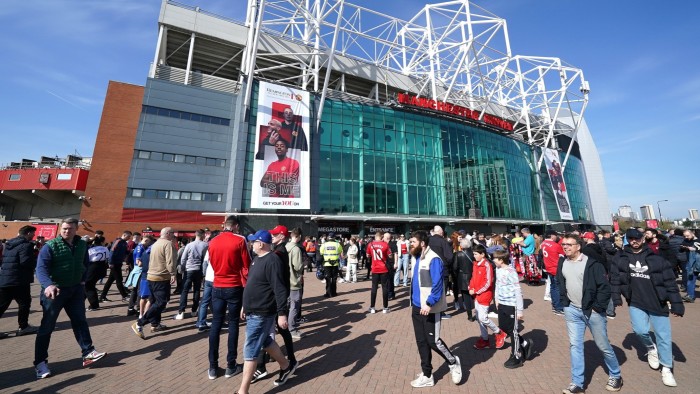Unlock the Editor’s Digest for free
Roula Khalaf, Editor of the FT, selects her favourite stories in this weekly newsletter.
Manchester United’s plans to rebuild or redevelop Old Trafford are set to drive one of the UK’s “biggest ever urban regeneration projects”, according to new proposals.
The Premier League club will decide by the end of this season whether to build a new 100,000-capacity ground, creating the country’s biggest stadium, or upgrade and expand the existing one.
Either option will spearhead 100 acres of sports-led regeneration immediately next door to Manchester city centre, according to plans drawn up by a task force including Lord Sebastian Coe, who led the London 2012 Olympics, local authorities and Greater Manchester mayor Andy Burnham.
Its initial proposals, published on Friday, promise new housing, entertainment venues and transport links.
Speculation about the future of Old Trafford, the condition of which is a major bugbear for fans, has been rife since the chemicals billionaire Sir Jim Ratcliffe bought a significant stake in the club last year.
Ratcliffe has previously pledged a “Wembley of the North” in its place. Last month his firm Ineos agreed a $100mn cash injection, said to be earmarked for new infrastructure.
In practice the club has yet to publicly choose between a new ground or a redevelopment.
The task force has now drawn up two options.
An entirely new stadium is the most popular among fans, it said, backed by 52 per cent of those surveyed.
The second option would redevelop and expand the existing ground, taking its capacity from 78,000 to 87,000.

A task force paper being proposed to council leaders next week said that funding and delivery options were “still being assessed”.
In the meantime, the club and local leaders are proposing a mayoral development corporation — a separate body designed to streamline land assembly and investment, which would be overseen by Burnham — to redevelop the wider area into a “world-class, sports-led visitor destination”.
That would include not only the area immediately around the ground, but land stretching into the nearby Wharfside, across the water from the BBC’s northern headquarters at MediaCity.

Burnham dubbed the proposal “the largest opportunity for urban regeneration” since London 2012.
Coe said the plan would drive growth not only locally, but across the north-west.
“At the heart of the plan is a world-class football stadium which will act as a catalyst for one of the biggest regeneration projects ever undertaken in the UK,” he said.
Proposals are being drawn up for the relocation of rail freight companies immediately to the west of the ground, as part of a bigger exercise aimed at freeing up the region’s notoriously congested rail routes for more passenger services.
The taskforce’s proposals would require involvement from central government to co-ordinate heavy rail services, as well as investment in new local transport links.
Representatives of the project are expected at the Davos summit in Switzerland next week as part of moves to engage investor interest, as well as at the Mipim property conference in France in March.



